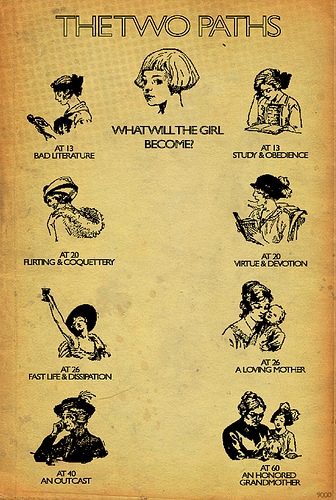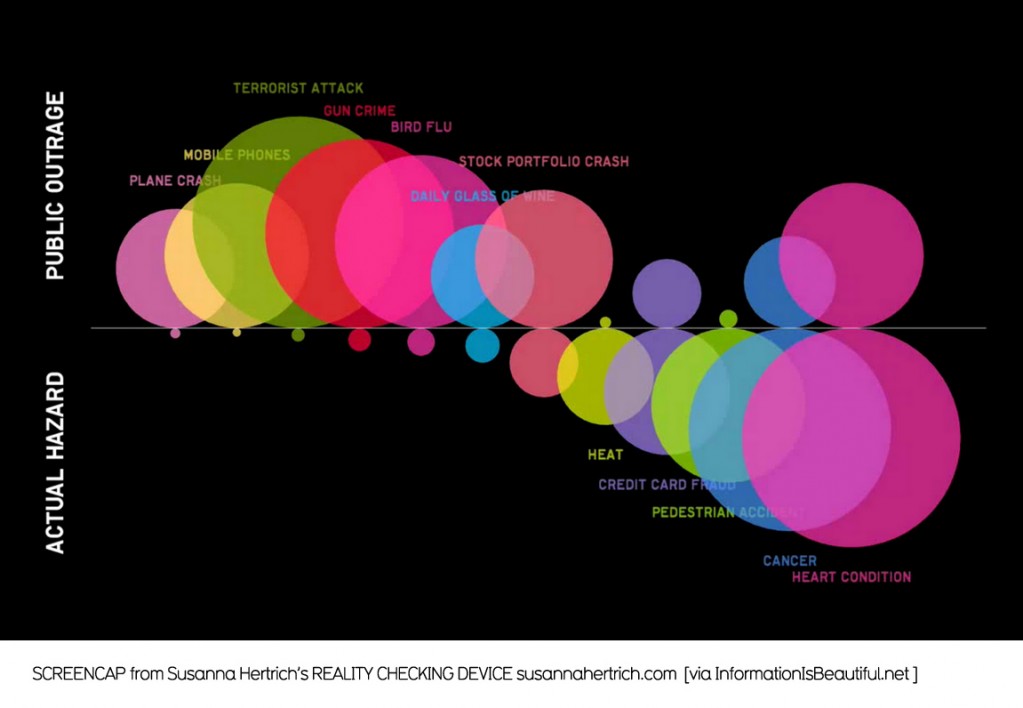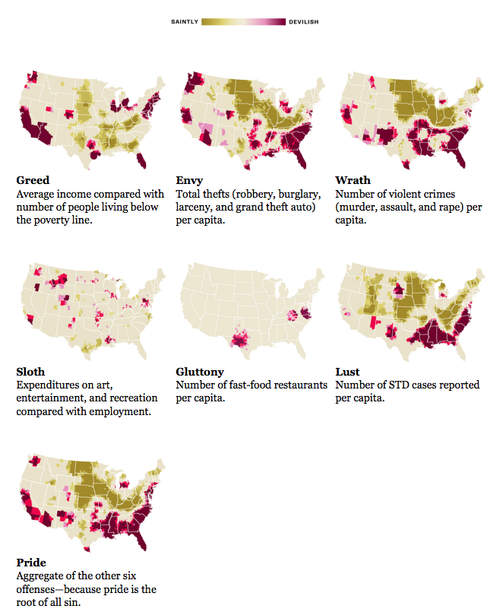Kristyn G. sent in this excellent image showing the clear division of the world into two paths: that of the sexually active flirt, destined to a life of shame and loneliness (by age 40), and the good girl who can become a happy mother and grandmother:

Apparently it appeared in a “social hygiene” manual in the early 1900s.
Also see these trailers for old movies about teens gone wild.
NEW! Awesome reader Maria found the boys’ version:




